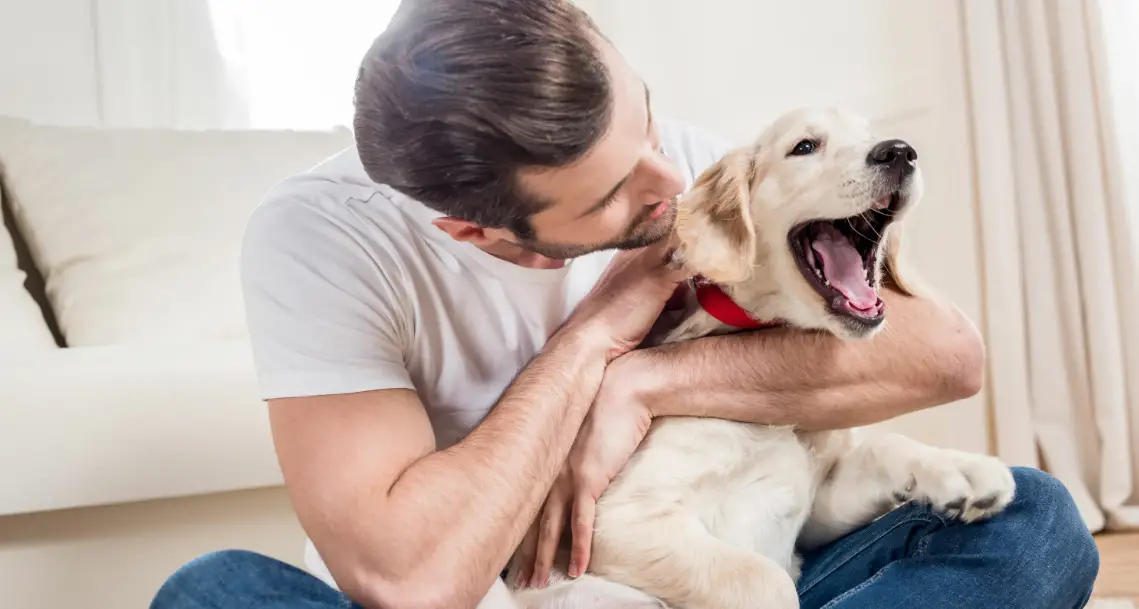While Pet Sitting as a Pet Sitter
As a pet sitter, your top priority is ensuring the safety and wellbeing of your clients’ pets. While pet sitting can be rewarding work, it also comes with significant responsibility. Pet owners trust you with the care of their cherished pets, so you must take all necessary efforts to keep the animals in your care safe and secure at all times.
There are various processes you should take to ensure the safety of the dogs under your care. By taking the necessary precautions, you may give pet owners peace of mind that their pets are in good hands. In this blog post, you’ll learn how to ensure safety of pets while sitting as a pet sitter.

Pet Proofing Your Home for Safety
To ensure the safety of pets in your care as a pet sitter, thoroughly pet proofing the home is essential.
Remove hazards and secure exits
Remove any little objects that the pet could choke on, and lock garbage can lids. Restriction of access to any harmful substances. Install baby gates to limit the pet’s access in the home, particularly stairs and places under construction. Secure doors and windows to prevent pets from escaping or invading.
Provide constant supervision
Always keep a close eye on the pet, especially when you first arrive for a sitting visit. Walk through the entire house looking for the pet and any hiding places. Maintain your vigilance to avoid damaging habits such as chewing on wiring or furniture. To avoid hostility or injury, keep an eye on relationships with other pets in the house.
Meet essential care needs
Ensure that the pet has access to food, water, medications, walks, litter boxes, and anything else that the owner has specified. Follow any feeding or walking routines that have been provided. Keep water bowls filled and litter boxes clean.
Maintain a regular routine
Try to keep the pet’s routine as consistent with their typical timetable as feasible. Walk, feed, and interact with the pet at regular intervals. To reduce anxiety caused by the owner’s absence, you can provide extra attention and play. Following certain guidelines will assist keep the pet comfortable during their stay.
Following these recommended practices will ensure the comfort and happiness of pets while their owners are away.
Creating a Safe Environment for Pets
As a pet sitter, you must create an environment that is appropriate for the creatures in your care.
- Conduct a thorough walk-through of the entire property when pet sitting in a client’s home to look for any potential hazards or concerns to the animals. You can check to ensure that gates are secure, that chemicals and waste are securely sealed and kept, and that there are no small objects that an animal could choke on. Also you need to make sure that any pools, hot tubs, or other water features have protective barriers or covers in place.
- Be watchful to maintain toxic materials such as cleaning supplies, drugs, and plants out of reach of pets. Always ensure that any cords, wires, or chargers are likewise out of reach, as they can cause strangulation or electrocution. Install a baby monitor or pet camera in the area where the animals sleep to keep an eye on them, especially at night.
- A regular feeding, exercise, play, and bathroom regimen is essential for the animals’ health and your peace of mind. Maintaining a consistent routine will assist reduce stress and behavioral concerns. Keep an eye out for any changes in behavior or eating/drinking habits, since these can indicate a medical problem that needs veterinarian attention.
By taking appropriate precautions and being attentive to the animals in your care, you can have a rewarding experience for both the pets and their owners.
Monitoring Pets Closely to Prevent Accidents and Injuries
One of your primary priorities as a pet sitter is protecting the safety of your customers’ pets. Accidents and injuries can be avoided by closely monitoring the dogs in your care.
Supervise pets at all times.
During your visit, keep an eye on the pets, especially when they are socializing with one another. Never leave a pet alone, even for a short period of time. Constant supervision enables you to react quickly in the event of pet aggressiveness before injuries occur.
Separate pets when unsupervised.
When you are not present, it is best to keep pets in separate areas. Place dogs, cats, and any other pets in their crates, carriers or a confined room to prevent unwanted chasing, aggression, or other behaviors that could lead to harm. Only when you return should the pets be allowed together under your supervision.
Ensure all areas pets have access to are “pet-proofed”.
Examine your home for hazards and take the required precautions. Keep all medications, cleaning materials, and dangerous substances out of reach of pets. Electrical outlets should be covered or blocked. Remove any little things that your pet could choke on. Put up barriers in front of stairs and balconies.
Provide plenty of food, water, exercise, and potty breaks.
Meeting your pet’s fundamental nutritional, hydration, and elimination needs helps keep them comfortable and less prone to anxiety or restlessness, which could develop to behavioral disorders. Take your dog for frequent walks and toilet breaks. Restock the food and water bowls. Keeping pets on their regular schedules as much as possible will help keep them happy and accident-free.
Frequently Asked Questions
Question: What should I do if a pet I’m caring for exhibits symptoms of illness or distress?
Answer: Act promptly by contacting the owner and, if necessary, seek veterinary care. Document any changes in behavior or symptoms.
Question: Are there any special precautions I should take with different sorts of pets, such as dogs, cats, or exotic animals?
Answer: Yes, each type of pet may have unique safety needs. Familiarize yourself with these requirements and discuss them with the pet owner.
Question: How can I prevent accidents in a client’s home by pet-proofing it?
Answer: Remove potential hazards including toxic plants and tiny objects, and lock cabinets storing hazardous substances. Keep wires out of reach of children.
Question: What should I include in my emergency response plan for pet sitting?
Answer: Your plan should contain the location of the nearest emergency vet clinic, contact information for the pet owner and their veterinarian, and emergency transportation options.
Final Thought
As a pet sitter, the safety and wellbeing of the animals under your care should be your top priority. By taking the appropriate precautions, asking the right questions, and staying vigilant, you can provide pet owners peace of mind that their furry family members will be safe and secure.
Make sure you understand the specifics of each animal’s needs, stick to their routine as much as possible, and avoid taking unnecessary risks. If anything seems off or causes concern, don’t hesitate to contact the owners or a vet. With the proper planning and precautions, you’ll be able to keep tails wagging and give pets a safe space to call their own, even when their owners are away.


